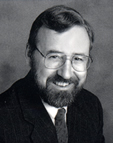ELPS 710 Introduction
Course Catalog Description
 This course focuses on leadership for effective teaching and learning in contemporary P-12 schools or community colleges. It includes advanced-level study of the nature of learning, the nature of students, the nature of the curriculum to be taught, and the fostering of instructional practices that improve learning for all students.
This course focuses on leadership for effective teaching and learning in contemporary P-12 schools or community colleges. It includes advanced-level study of the nature of learning, the nature of students, the nature of the curriculum to be taught, and the fostering of instructional practices that improve learning for all students.
Introduction to ELPS 710A
ELPS 710, Curricular and Instructional Leadership for Systematic Reform, is a required course in the Doctoral Program in Educational Leadership at California State University, Northridge. This 6-unit course is composed of two three unit sections, ELPS 710A and ELPS 710B, and is taught concurrently with ELPS 745,The Science of Administration.
ELPS 710A is taught by Dr. Norman Herr, a specialist in science and technology education. ELPS 710A addresses instructional and curricular issues, with a focus on math, science, and technology education. Doctoral students use emerging collaborative web-based technologies to communicate with each other and the broader educational community. They develop a shared knowledge base (wiki) on issues pertaining to curricular and instructional leadership. Sessions are broadcast on the Internet to serve students who are unable to come to class. In addition, all sessions are recorded and can be accessed electronically for review purposes.
ELPS 710A examines research on how people learn and policy on curriculum and instruction to identify curricular and instructional issues in need of systematic reform. The curriculum of ELPS 710A is divided into four major themes as shown on the course home page.
Course Objectives / Learning Outcomes for ELPS 710.
ELPS 710A addresses Student Learning Objectives 1,2,3, and 5 of the Doctoral Program. By the end of this course, students will be able to:
- Examine the latest research and theories about learning and their implications for what we teach, how we teach it, and how we assess what students learn.
- Critically examine instructional policies and practice and identify areas of need for school improvement and systemic reform.
- Describe trends, issues, and barriers in instructional practice to school improvement and systemic reform, and strategically plan to remove those barriers.
- Develop a personal vision of, and commitment to, instructional leadership.
- Plan and evaluate curriculum that integrates content literacy and mathematical & scientific understanding in instruction.
- Plan and evaluate curriculum designs that integrate technology in support of curriculum.
- Evaluate methods for the use of technology to support instruction.
